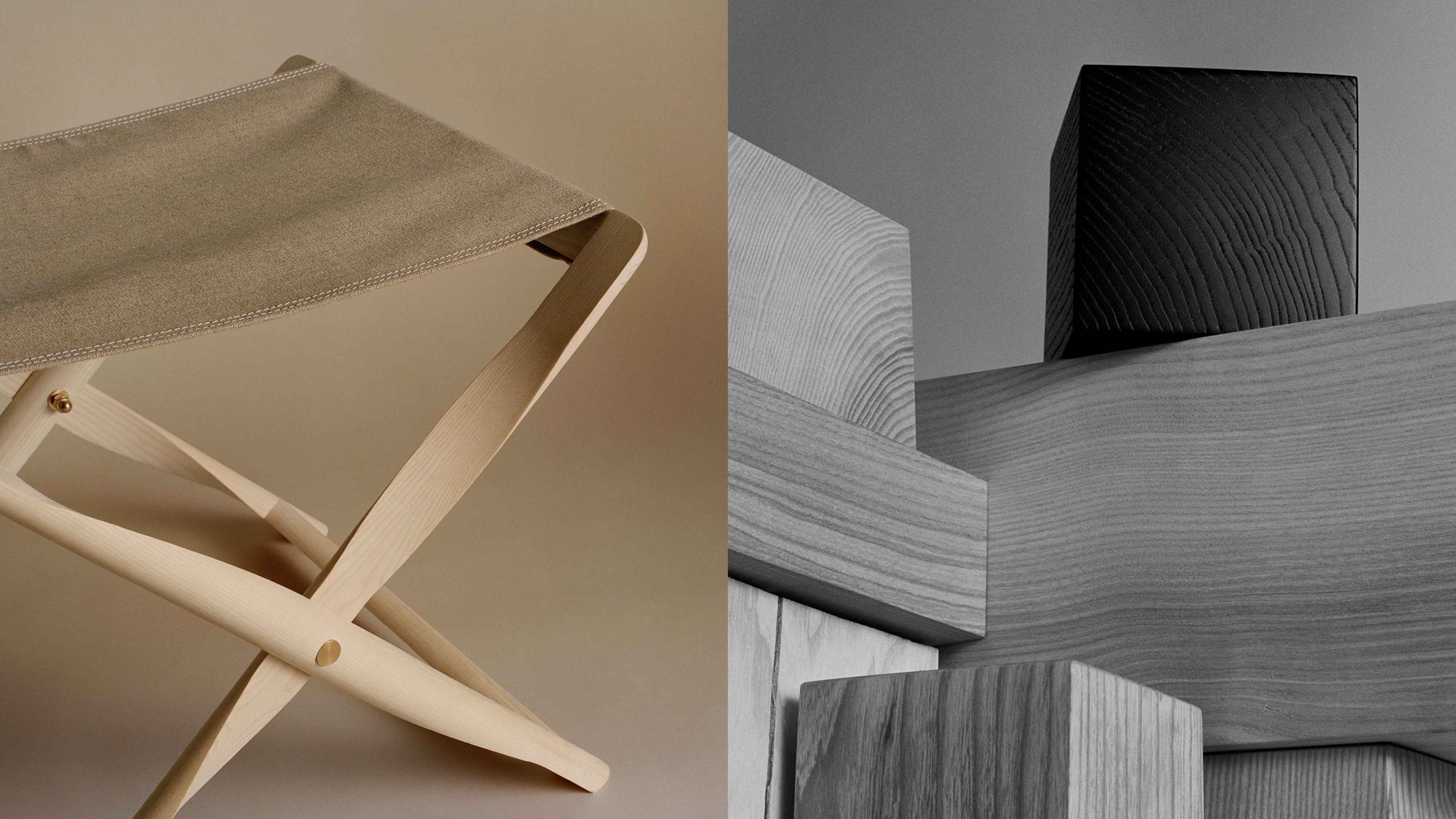Ash
A staple in Scandinavian design, ash’s light-coloured wood feels eternally contemporary.

In Norse mythology, it’s claimed the first man came from ash – a fitting testament to a wood that remains a mainstay in Danish design today. Found throughout Europe, the ash tree can grow up to 40 meters tall and is typically felled between 60-80 years of age. Popular in furniture-making, it’s a flexible and fibrous hardwood that lends itself well to the steam bending of chair parts.
For Kaare Klint, Ash offered an ideal solution for his Safari Chair and Propeller Stool, both of which require particular flexibility for their construction.
With a paler colouring than many other kinds of wood, ash has a straight grain that often features a distinctive marbled pattern. It is also recognizable by clearly visible annual rings, which indicate the high quality of the wood.

Ash is treated with white oil or soap to protect and enhance the light colouring of its wood. The creamy paleness of ash is sometimes used as a contrast feature against the darker tones of oak – for instance, on the interior shelves of Preben Fabricius and Jørgen Kastholm’s bookcase system. Ash’s deep grains mean it also lends itself well to paint as the structure of the wood remains visible beneath it. It is for this reason that Hans J. Wegner’s Wishbone Chair is available in painted ash.
Qualities in furniture production
Ash has good strength characteristics and a high bending strength with long, elastic fibres.
Origin
Ash is commonly found throughout Europe.
Carl Hansen & Søn only uses FSC-certified (FSC-C135991) ash from responsible partners.
Growth & size
An ash tree can grow up to 40 metres in height and 1.5 metres in diameter.
An ash tree is typically felled when it is 60-80 years old.
Hardness
Ash is a relative hardwood species.
The weight of the wood may vary, but the mean weight is approximately 650 kg/m³.
Appearance
At Carl Hansen & Søn, we only use the heartwood of ash.
In its untreated state, the heartwood has a yellowish-white colour.
Ash has a lively appearance with a clear colour difference in the grain due to its distinctive ring-porous structure with coarse pores in the earlywood and fine pores in the latewood.
Surface treatment
At Carl Hansen & Søn, we surface treat ash with white oil, soap, oil and water-based paints.
Surface-treating the wood ensures a beautiful surface, additional durability and easy cleaning.
Since the colour of the wood ages with exposure to light, its appearance changes over time. Ash will eventually acquire a whitish-yellow tone.
The wood structure of ash is visible under the paint because the structure of the wood is open.


Highly resistant to weather and water damage, teak unites premium quality with a polished appearance.